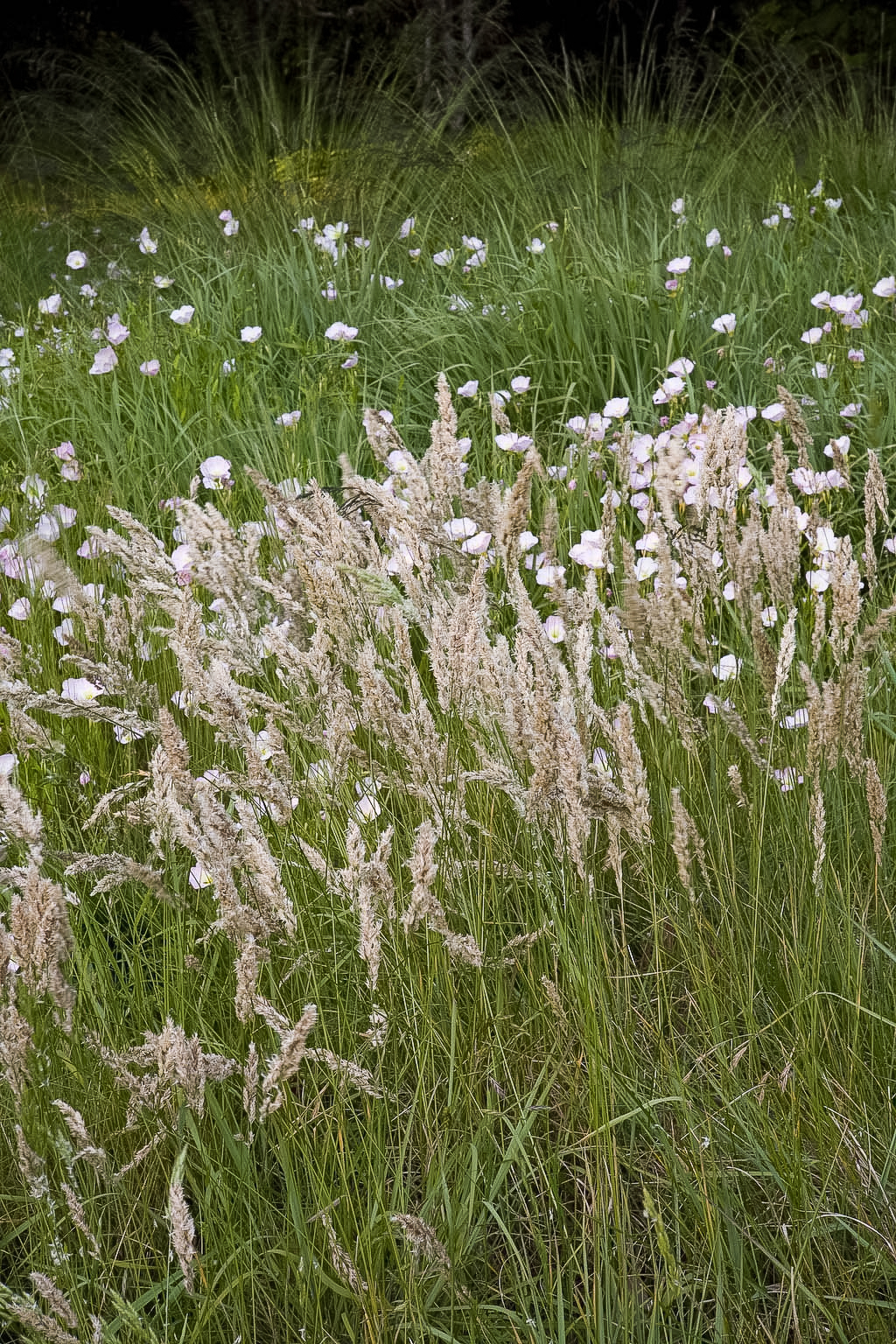
Poa arachnifera
Texas Bluegrass
Description
This sod-forming native American bluegrass is the darkest green, most drought-tolerant grass I have ever known or grown. Its species name, Poa arachnifera, comes from its spider web like silky flowers. Spreading from underground rhizomes, its classic bluegrass foliage grows from 6-12 inches high. It is shorter and slower growing in dry sites but can be aggressive in fertile moist soils with lots of fertilizer. Its strong growing habit is desirable in high-trafficked meadows or large-scale plantings. The ability to repair itself is a good trait in high-use garden settings.
The foliage of Texas bluegrass is a rich dark green. Soft, yet durable, it feels great under bare feet. This is unusual for many drought-tolerant grasses and sedges. The foliage is evergreen in most western climates with little effect from the cold, until temperatures drop into the 20's. With a hard freeze, the foliage blanches tan to winter russet, but greens back quickly with a cut back. Established colonies will go summer dormant without summer irrigation or rainfall, but greens up quickly if cut back and watered.
Texas bluegrass has showy flowers that rise above the foliage in late April to early May. The flowers are delicate panicles that nod 8-12 inches above the foliage. Unlike most grasses though, the flowers do not mature to a showy seed head. The resulting flowers do not usually produce any seed at all, preventing Texas bluegrass from spreading where it's not wanted and is why Texas bluegrass is never offered as seed. The old flowers fade to a whitish vestige of their former self and then fade into the foliage. I usually cut the flowers off with a few inches of foliage, when the flowers are no longer attractive.
Texas bluegrass makes a fine natural lawn or base meadow grass. Its ability to grow in a wide variety of soils and to thrive in sun or shade only adds to its appeal. It's great with bulbs and flowering accents and can be mowed to 1.5-2 inches for paths or sports turf. It may be too aggressive for small gardens. But properly grown (ie, regularly trimmed, kept on the drier side, and not over watered) it can find many uses in meadows large and small. In large plantings, the flower displays are breathtaking. Texas bluegrass is also useful as a filler between clumps of large flowering grasses.
John's Notes
General Details
Plant Type
Grass, Poaceae
Native Region
Texas, USA
Seasonality
Cool-season, evergreen
Height
Foliage grows 6-12 inches tall, flowers 8-12 inches above the foliage
Width
6+ inches
Alternate Names
N/a
Aesthetic Form
Landscaping Value
Groundcover, natural lawn
Foliage
Soft, narrow blue-green leaves
Flower Form
Showy, silky web-like blossoms dry to a whitish tan
Bloom Cycle
Spring to summer
Growth Habits
Creeping, spreads into dense mats via strong rhizomes
Plant Pairings
No Available Information
Care & Maintenance
Watering Needs
Low, water occasionally in the summer
Soil Preferences
Wide adaptability from sand to clay
Sun Exposure
Full sun, tolerates partial shade
Winter Heartiness
25° F, USDA zones 8-9
Desert Adaptability
No Available Information
Costal Adaptability
No Available Information